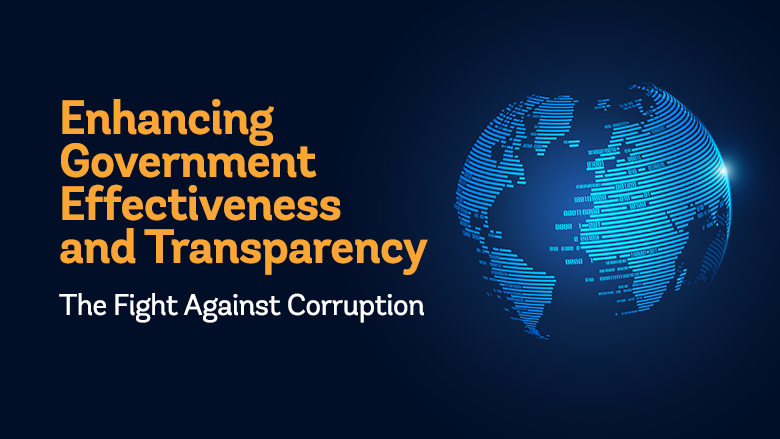

The report draws on the collective experts of staff across the World Bank to develop ways for enhancing the effectiveness of anti-corruption strategies in selected sectors and through targeted policy instruments. It covers issues, challenges and trends in five key thematic areas: Public Procurement; Public Infrastructure; State Owned Enterprises; Customs Administration; and Delivery of Services in selected sectors. The report also focuses on cross-cutting themes such as transparency, citizen engagement and Gov-tech; selected tools to build integrity; and the role and effectiveness of anticorruption agencies, tax and audit administrations, and justice systems. It features a country case study on Malaysia that traces the history of a country’s anti-corruption efforts over the last few decades.
**The report highlights that with the COVID-19 global pandemic, billions of dollars are being borrowed and spent by countries circumventing standard accountability procedures to manage the COVID-19 situation, leading to enhanced risk of corruption. To foster greater accountability, governments need to clearly articulate their actions, enforce rules, address violations, and remedy problems as quickly as possible in a transparent manner. The core tools of fiscal transparency, citizen engagement, and social accountability become ever more important.
SETTING THE STAGE by James Anderson
Chapter 1: Public Procurement by Joel Turkewitz
Chapter 2: Public Infrastructure by Ida Richter Gade and Ian Hawkesworth
Chapter 3: State-Owned Enterprises by Sunita Kikeri and Ruxandra Burdescu
Chapter 4: Customs Administration by Odd-Helge Fjeldstad, Ernani Checcucci Filho and Gaël Raballand
Chapter 5: Public Services: Land, Ports, Healthcare by Jana Kunicova
Chapter 6: Open and Inclusive Government by Stephen Davenport and Emily Kallaur
Chapter 7: GovTech by Kai Kaiser
Chapter 8: Asset and Interest Declarations by Dmytro Kotlyar and Laura Pop
Chapter 9: Beneficial Ownership Transparency by Alexandra Habershon, Solvej Krause and Zosia Sztykowski
Chapter 10: Exchange and Collaboration with Tax Administrations by Prof. Jeffrey Owens, Joy Waruguru Ndubai and Siddhesh Rao
Chapter 11: Anti-Corruption Agencies by Alan Doig and Francesca Recanatini
Chapter 12: Supreme Audit Institutions by Seongjun Kim, Donald Mpande, Pooja Churamani, Manoj Jain and Carmen Loo
Chapter 13: Justice System by Klaus Decker
COUNTRY SPOTLIGHT: Malaysia's Approach to Fighting Corruption by Firoz Abdul Hamid and Jeevakumar Govindasamy